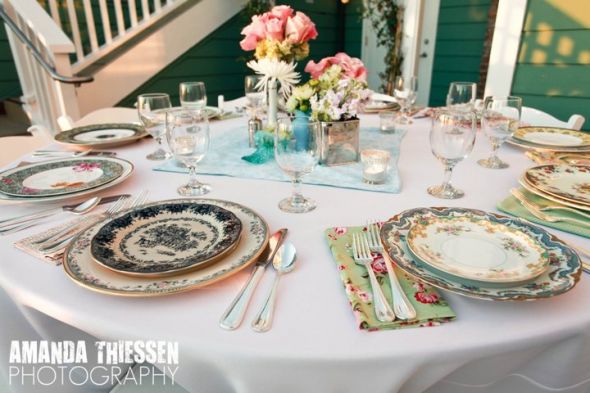There is a fine line between throwing pieces together and style coordination. The key to coordinating different elements into a cohesive style is finding one main similar factor. Since this is such a broad rule, I've come up with a few examples to better explain. For decor, you want china patterns for your table settings. Your main factor can be that all of your plateware are flowery china patterns or they are different designs all in blue/red/whatever color you want. This is enough of a base to keep an entire table of separate china designs looking whole. Basically, the main theme has to be unifying, whether it be the material, color, design or shape. For centerpiece vases, the main factor could be that all the vases are glass or all one size if they are in different materials. Color is a great unifier, different sizes & shapes of candles all in the same color family create a great visual. The real advantage to this new style of coordinating elements is that aside from expensive rental companies, it is hard to find mass quantities of any one item. Coordinating gives couples more freedom and can cut costs dramatically.


The next is the wedding party attire, which includes the bridesmaids, groomsmen and all children involved. Any woman who has been a bridesmaid knows the importance of 'wearability after the event' since those pretty dresses are not cheap. Not to mention that if you get a bunch of women together, they are all going to have different body sizes and types so finding one dress can be difficult. So what is the main factor for coordinating dresses? You can either have the same dress in different colors or you can choose a few dress styles all in the same color or you can have different dresses that are in the same color family. After you have the dresses figured out, then match the groomsmens' ties with the colors. Hope this has given you a few ideas and possibly some courage to step outside the matchy-matchy box. Enjoy!





No comments:
Post a Comment